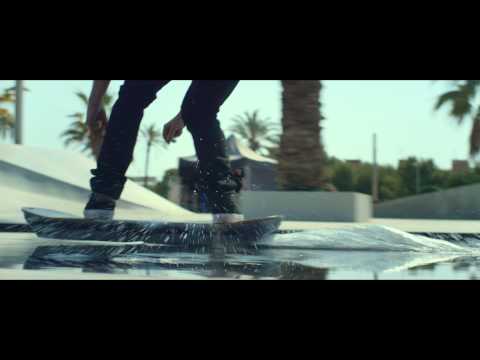-
Tips for becoming a good boxer - November 6, 2020
-
7 expert tips for making your hens night a memorable one - November 6, 2020
-
5 reasons to host your Christmas party on a cruise boat - November 6, 2020
-
What to do when you’re charged with a crime - November 6, 2020
-
Should you get one or multiple dogs? Here’s all you need to know - November 3, 2020
-
A Guide: How to Build Your Very Own Magic Mirror - February 14, 2019
-
Our Top Inspirational Baseball Stars - November 24, 2018
-
Five Tech Tools That Will Help You Turn Your Blog into a Business - November 24, 2018
-
How to Indulge on Vacation without Expanding Your Waist - November 9, 2018
-
5 Strategies for Businesses to Appeal to Today’s Increasingly Mobile-Crazed Customers - November 9, 2018
The Lexus hoverboard in photos
On the bright side, Lexus has disproven at least one famous fictional fact: hoverboards do work on water.
Advertisement
Early images and clips revealed what appeared to be a conventional cement park no different to any you’d find here in Australia, although Lexus revealed that it had embedded a special magnetised metallic layer beneath the surface to repel the supercooled superconductors.
But, predictably, the hoverboard isn’t quite as magical as it looks.
Lexus has published a series of video teasing the new technology, with the latest concluding in the vague, “See it August 5th”. According to the Japanese automaker, the Hoverboard project began 18 months ago through a collaboration with a team of scientists from IFW Dresden and evico GmbH, which specialize in magnetic levitation technology.
The hoverboard itself contains two “cryostats”, reservoirs filled with superconducting material that must be chilled to -197 degrees. Inside the board is a superconductor, which generates an intense magnetic field when extremely cold. There are 32 superconducter bulks and 50lbs of liquid nitrogen within the board. This force is strong enough to allow the rider to stand and even jump on the board.
“I’ve spent 20 years skateboarding”, said McGouran after riding the hoverboard, “but without friction it feels like I’ve had to learn a whole new skill, particularly in the stance and balance in order to ride the hoverboard”.
Advertisement
Details slowly trickled out, leading to global headlines that Lexus was gearing up to sell a Marty McFly, Back To The Future-style hoverboard (it’s not), while the skating community speculated about who the legs in the teaser might belong to. That’s a shame but Lexus has indeed built a working hoverboard, it deserves some kind of credit for that.





























